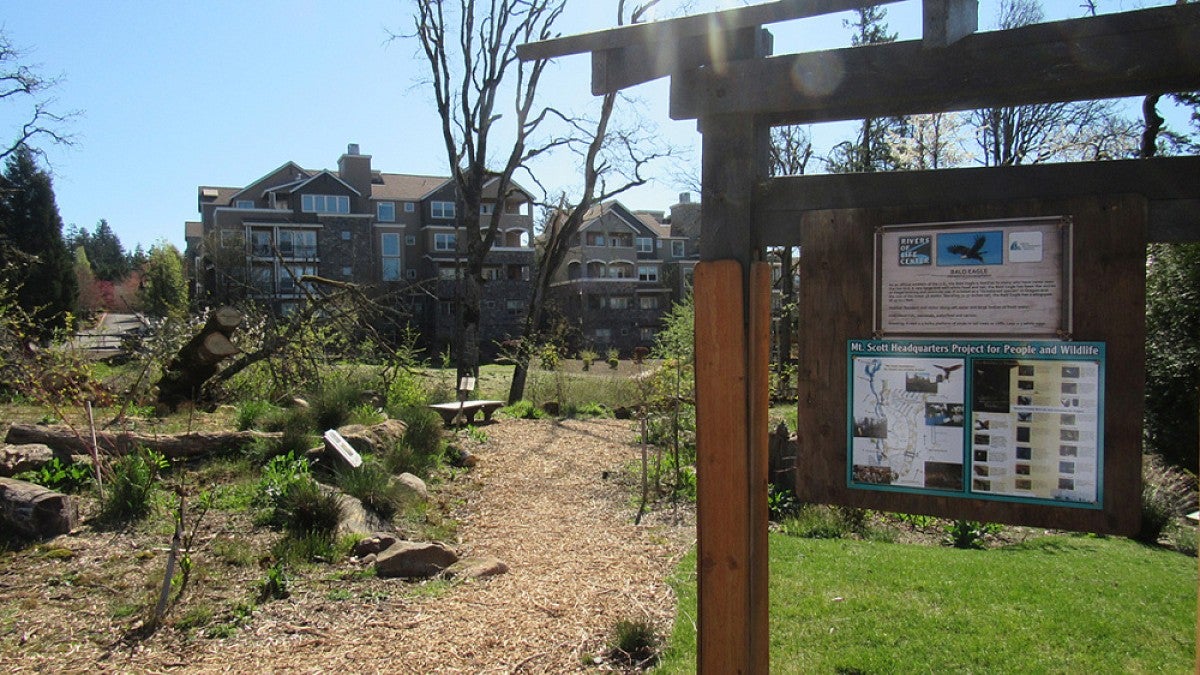The Museum of Natural and Cultural History has awarded its sixth annual Oregon Stewardship Award to a youth group that restored part of a Clackamas County watershed.
Administered by the museum’s advisory council, the award recognizes a project that has significantly involved its community in an environmental or cultural heritage project, one that aligns with the museum's mission to inspire stewardship of our collective past, present and future.
This year’s award recipient is Youth Rebuild Mt. Scott Watersheds, a project of the Rivers of Life Center. Through the project, more than 200 youth restored more than five miles of creeks and streams of Mount Scott in Clackamas County. They built habitats for beaver, muskrat, otter and native birds, as well as a network of trails and interpretive exhibits.
“Where there was nothing but debris and waste materials throughout the project area, a clean and beautiful wildlife-naturescape exists now,” wrote Jerry Hermann, founder and president of Rivers of Life Center.
Under mentorship from biologists, naturalists and architects, participants in the program learned skills and discovered opportunities for careers in rebuilding environments during climate change. Interpretative programs brought together experts on natural and cultural history in the community, from a program on birds of prey to one tracing the interaction between local tribes and white settlers in the region that included members of the Clackamas and Molalla tribes living in the area today.
The project brought together county officials, the Union Pacific Railroad, the Aerie Event Center and Golf Course and five neighborhood associations to clean up, rebuild and restore the watershed.
“The museum’s stewardship mission brings us into contact with Oregon heroes every day, people doing amazing work to protect and preserve our ecosystems, landscapes and cultures,” said Jon Erlandson, executive director at the Museum of Natural and Cultural History. “The Youth Rebuild Mt. Scott Watersheds project exemplifies innovative work that is mitigating the effects of habitat degradation and climate change throughout Oregon and the Pacific Northwest.”
“The natural area had issues over time. It had not been managed well,” said Oregon Sen. Bill Kennemer, who represents Oregon City. "This project put trail in, cleaned up garbage, and turned it into a place people can use rather than a place people can avoid. Beyond that, the project has built trails during the pandemic for people to use outside their homes. It has provided opportunities and created unlikely partnerships. And it has been successful in helping young men find their way back.”
Youth Rebuild Mt. Scott Watersheds was chosen out of a group of five finalists. Noche Cultural, a project from Comunidad y Herencia Culutral in Springfield, presented an event featuring Mexican folklore, dance and the Chacherria tradition of horse wrangling. The Mt. Union Cemetery in Corvallis, the first cemetery in Oregon to allow the interment of Black people, has a project to place flags in May to remember the 200 veterans buried in the cemetery. The Youth Conservation Crew summer program from the Coast Fork Willamette Watershed Council employs local youth from Cottage Grove to improve the watershed through restoration. The Rasor Park Wetland Prairie Restoration is a project in the Willamette Valley to restore an 8-acre area of the Willamette River.


